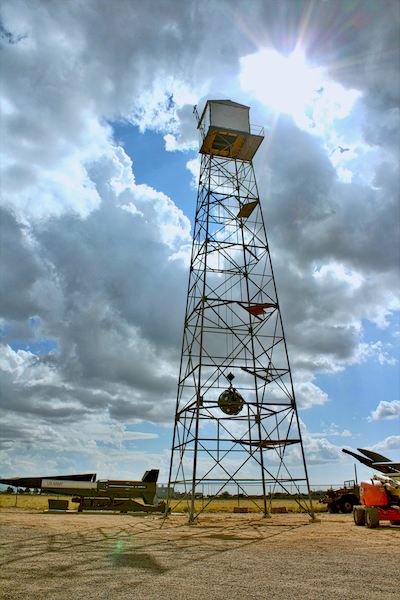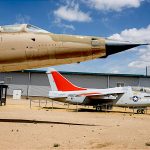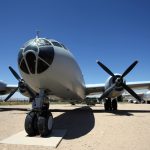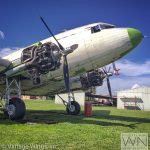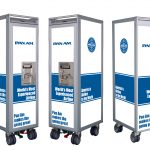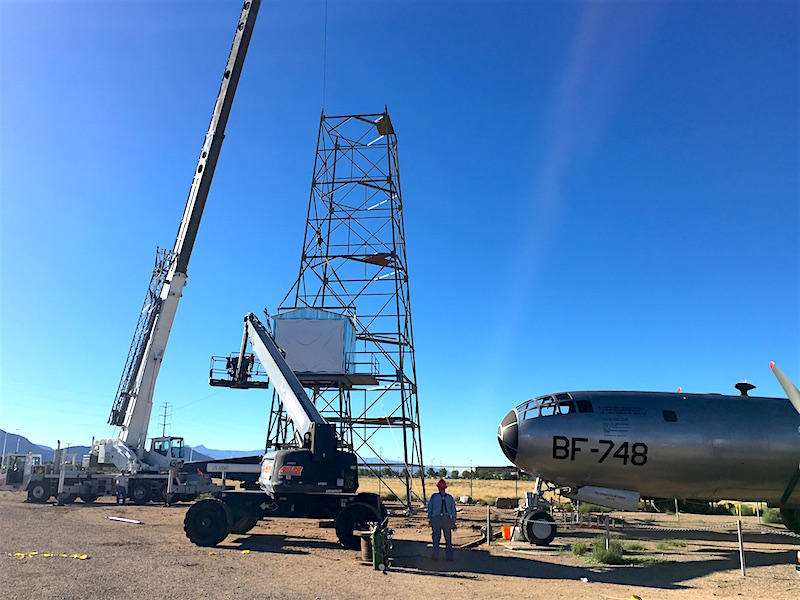
The National Museum of Nuclear Science & History is erecting the only Trinity Tower replica in existence – a steel tower, just shy of the original 100 ft historic piece designed to hold the first atomic bomb tested at the Trinity Site on July 16, 1945.
This new exhibition was constructed in close proximity to the museum’s B-29 Superfortress in the museum’s nine-acre outdoor exhibit area, Heritage Park, the project was completed on October 6, 2017.
Through generous financial support provided by benefactors Clay Kemper Perkins and Dorothy Perkins, over 15,000 lbs of steel was delivered to the museum in the late summer months to start construction of this historic reproduction. The concrete footings were secured deep into the New Mexico ground, and the rebar was in its place by mid-September. Construction on the tower began under the supervision of David A. Vana, owner of Fire Tower Restoration, as the replica’s body is a variation from a vintage fire tower design.
Construction of the tower’s “shack”, the enclosed platform at the top of the tower that held the nuclear bomb for testing, began under the supervision of the museum’s executive director, Jim Walther, with help from museum staff and volunteers. Plans are to hoist the shack to the top of the tower upon its completion the first week of October.
Many local companies – including Enterprise Builders, Harris Rebar, JB Henderson and Noel Company – have donated their time, labor and equipment to this behemoth endeavor, noting the importance of bringing this part of history back to life.
“The Trinity Test was a monumental moment in history, one that resonates with people all over the nation and very specifically with the people of New Mexico,” said Jim Walther, Museum Director. “We are proud to exhibit the largest collection of artifacts relating to the Trinity Test, and though White Sands Missile Range (where the actual test took place in 1945) is only open to the public two times a year, we are open daily to bring this story to life for visitors of all ages and backgrounds.”
The original Trinity tower was designed to hold the “Gadget,” the nuclear device tested on July 16, 1945. The Gadget was a spherical implosion-type plutonium device, five feet in diameter, identical to the “Fat Man” bomb used three weeks later in the atomic bombing of Nagasaki. The Gadget was hoisted to the top of the 100-foot tower on July 14, 1945, in preparation of its detonation a couple of days later. At the top of the tower, there was an oak platform surrounded on three sides with sheets of corrugated iron. The iron shack’s open side faced toward the camera bunker to the west of the tower. When it was finished, it was said to have looked like an “overgrown windmill”. The tower was vaporized in the explosion of the Gadget, but the footings were left intact.
The National Museum of Nuclear Science & History’s replica of the Trinity Tower will debut on Friday, October 6, at the museum’s “Nuclear After Dark – Trinity Files” event. This event opens to the public at 5:30 p.m., inviting visitors to tour the museum and view the new Trinity Tower exhibition, enjoy an outdoor screening of “Modern Marvels” The Manhattan Project and experience local food trucks and brewery. This event is $15 per person and is not covered by museum memberships or other passes.
About The National Museum of Nuclear Science & History
The National Museum of Nuclear Science & History is located at 601 Eubank SE in Albuquerque, New Mexico, at the entrance to the Sandia Science & Technology Park. The Museum is a not-for-profit organization. It was chartered by Congress in 1991 to serve as a repository and steward of nuclear-related historical items and is a nationally accredited, Smithsonian affiliate. The Museum is open 9 a.m. to 5 p.m. 361 days a year. The Museum’s website is www.nuclearmuseum.org and the phone number is 505-245-2137.








